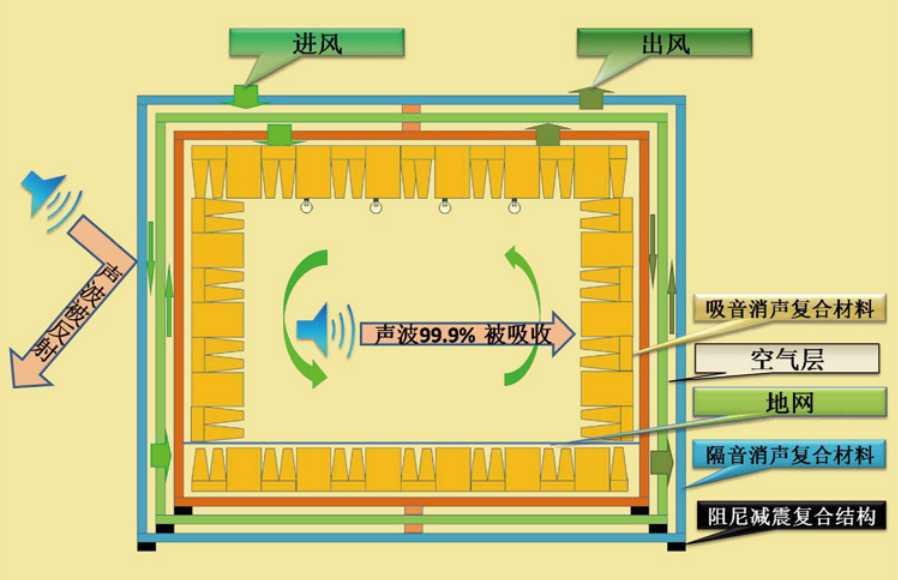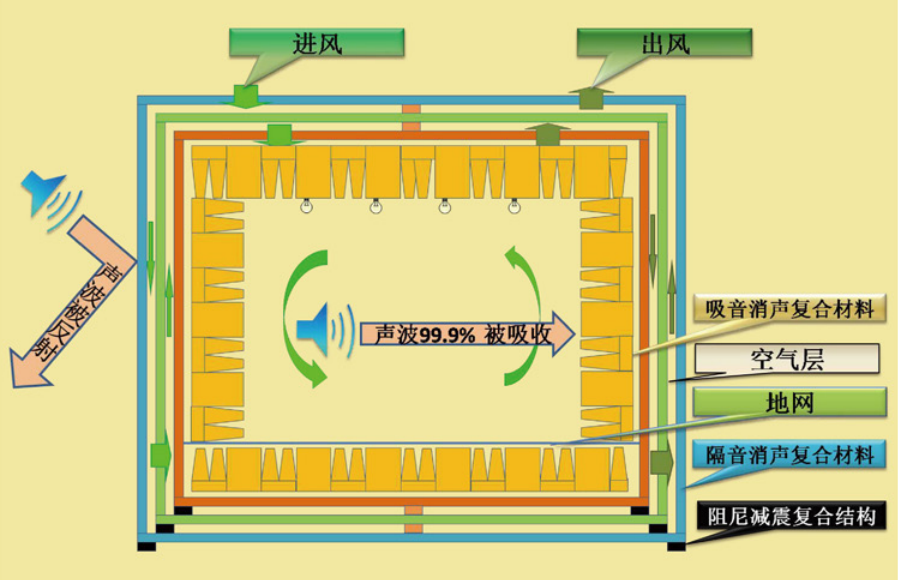Patented Ventilation System (Patent Name: Turbocharged Microcirculation Variable-Frequency Noise-Reduction Ventilation System, Patent No.: 200520108948.5)
This system innovatively adopts a dual-channel noise-reduction ventilation pipeline and collaborates with the air layer inside the anechoic chamber shell to construct an indoor-outdoor air microcirculation architecture. The design is equivalent to integrating four large-scale impedance composite mufflers, which can simultaneously achieve the dual functions of efficient ventilation and excellent sound absorption and noise reduction, fully meeting the stringent requirements for ventilation efficiency and noise control in scenarios such as acoustic laboratories.








